
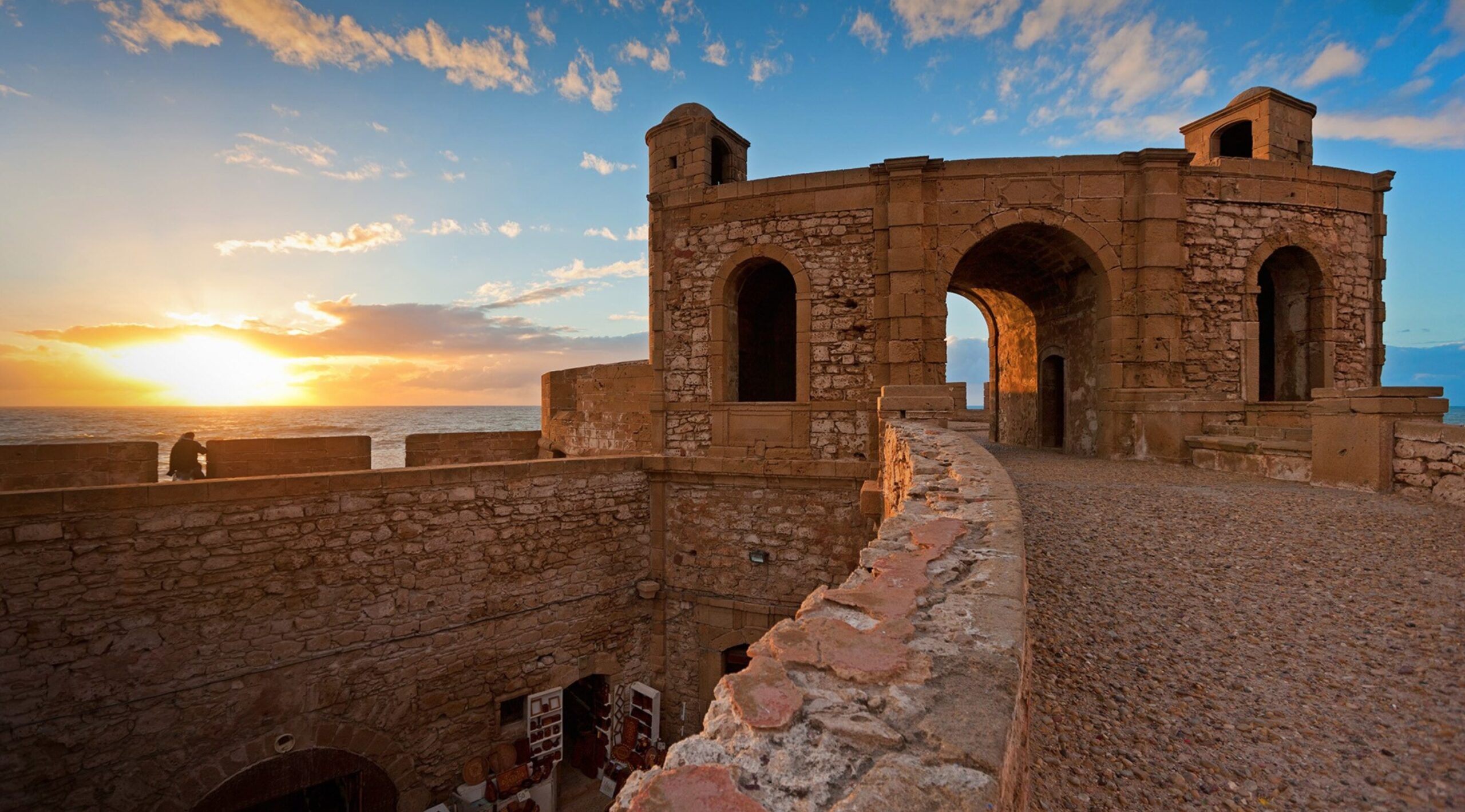
Essaouira—Morocco’s charming Atlantic coastal city—is a destination that blends history, culture, art, and nature in a laid-back, bohemian atmosphere. Whether you’re wandering the whitewashed medina, watching kitesurfers ride the wind, or sipping mint tea at a seaside café, Essaouira Morocco travel offers an unforgettable experience for every type of traveler.
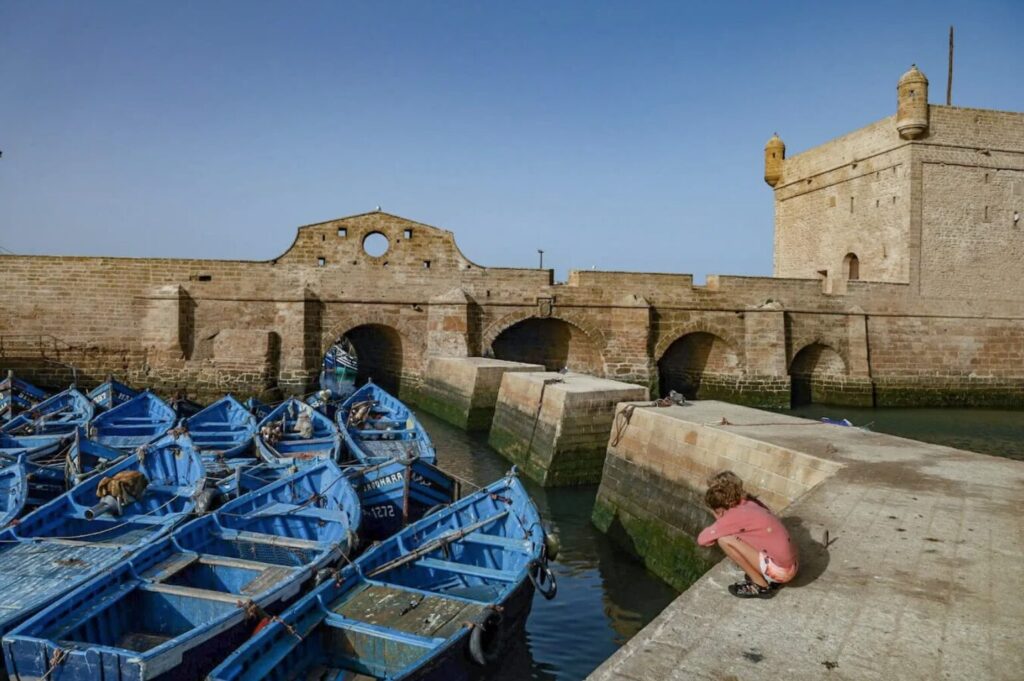
In this guide, we’ll walk you through the best of Essaouira: what to see, where to go, insider tips, and how to make the most of your journey to this UNESCO-listed coastal gem.
About Essaouira, Morocco
Tucked along Morocco’s Atlantic coastline, Essaouira is often referred to as the “Wind City of Africa.” It’s known for its strong trade winds, rich fishing history, and a fortified medina that dates back to the 18th century. Listed as a UNESCO World Heritage Site, the city is a harmonious blend of Moroccan, Portuguese, and French influences.
Unlike the hustle of Marrakech or Casablanca, Essaouira maintains a calm, breezy vibe, attracting surfers, artists, musicians, and travelers seeking inspiration and tranquility.
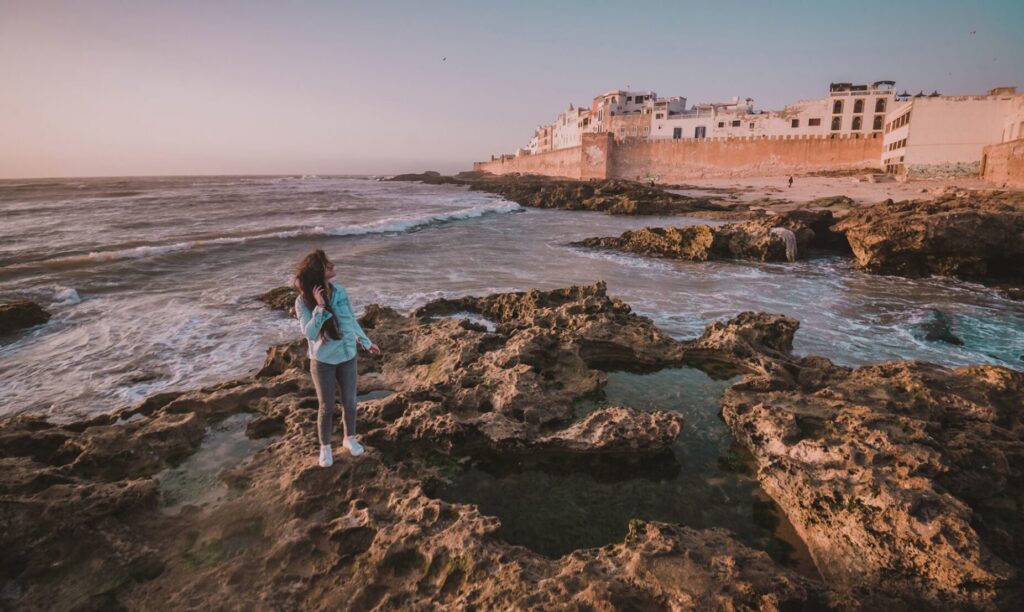
Highlights at a glance:
- Coastal fortress walls
- Bustling harbor
- Fresh seafood markets
- Artisan workshops and galleries
- Laid-back beach lifestyle
Top Things to Do in Essaouira
1. Explore the Historic Medina
The heart of Essaouira is its medina, a maze of narrow streets lined with artisan boutiques, spice stalls, and hidden courtyards. As you wander, you’ll encounter woodworkers crafting intricate thuya boxes, musicians strumming gnawa rhythms, and cafes where time seems to slow.
2. Visit the Skala de la Ville
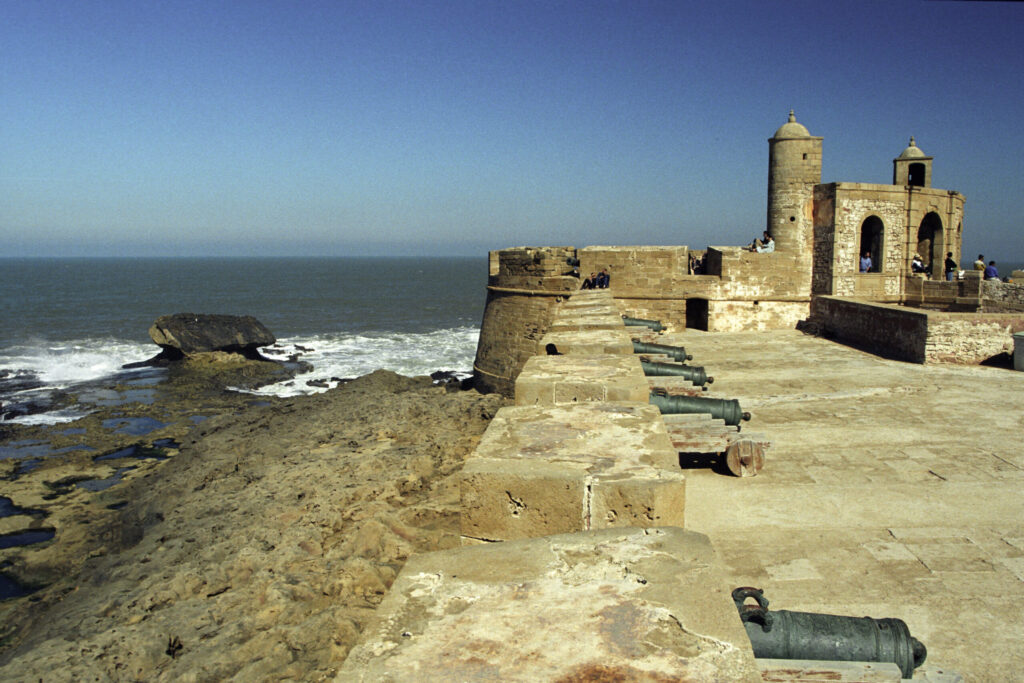
These historic ramparts offer panoramic views of the Atlantic Ocean and crashing waves. Lined with cannons and made famous in part by Game of Thrones filming, the Skala de la Ville is both a photo hotspot and a piece of history.
3. Chill Out on Essaouira Beach
This wide, breezy beach is perfect for walking, horse riding, or simply soaking in the sun. It’s also a world-renowned destination for windsurfing and kitesurfing thanks to the strong Atlantic winds.
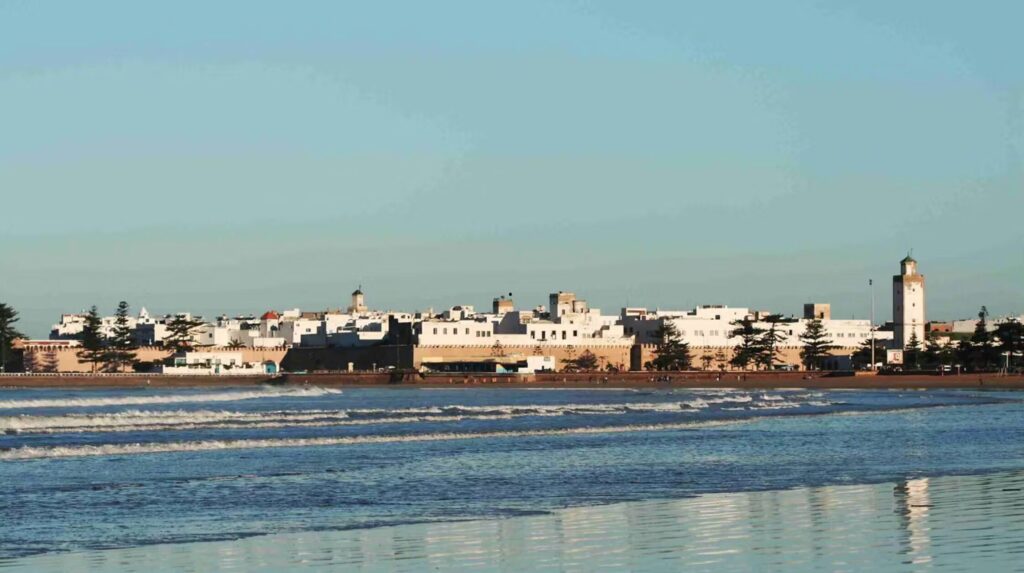
4. Dive into the Local Cuisine
Seafood lovers, rejoice! Visit the harbor and handpick your own fish, which can be grilled on the spot at nearby stalls. Try classic Moroccan dishes like tagine, harira, and couscous with a seaside twist.
5. Discover Local Music and Culture
Essaouira is known for its musical soul. It’s home to the annual Gnaoua World Music Festival, which celebrates the rich spiritual and musical traditions of the Gnaoua people.
Travel Tips and Cultural Insights
Getting There
Essaouira is about a 2.5-hour drive from Marrakech. Shared taxis and buses are available, or you can hire a private transfer. There’s also a small airport serving a few international and domestic flights.
Weather and Best Time to Visit
The climate is mild year-round, with July to September being the warmest. Due to the winds, it rarely feels too hot, making Essaouira Morocco travel ideal even in the summer months.
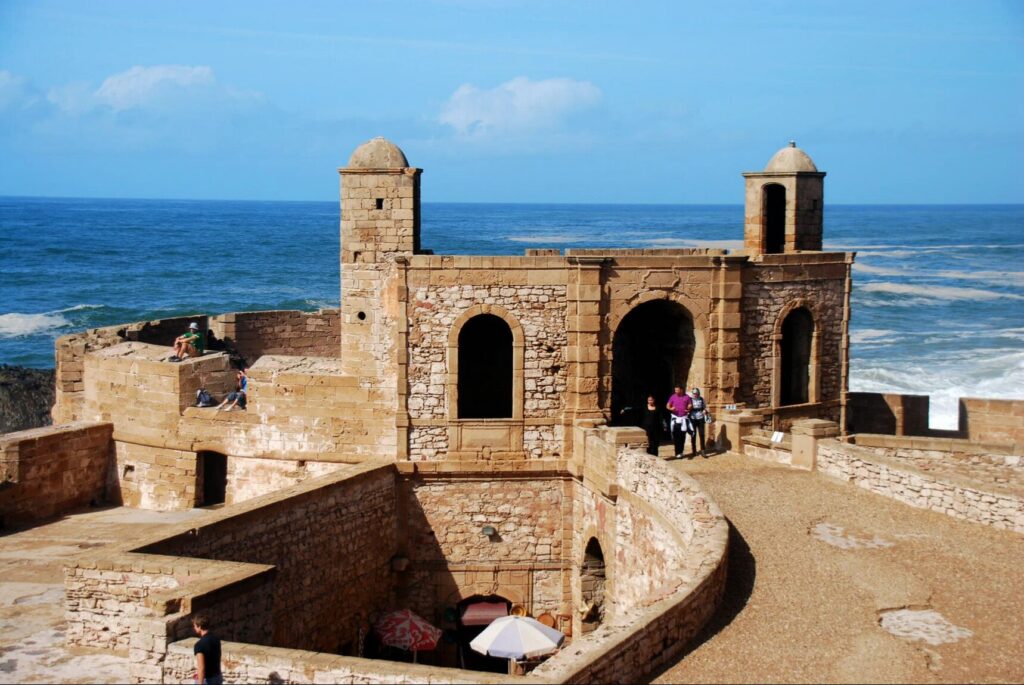
Cultural Etiquette
- Dress modestly, especially in the medina and rural areas.
- Learn a few Arabic or French phrases—it goes a long way.
- Always ask before photographing locals, particularly women.
Currency
The local currency is the Moroccan dirham (MAD). Credit cards are accepted in some places, but keep cash on hand for souks and smaller vendors.
Stories from the Road: Traveler Testimonials
Jasmine, a digital nomad from the UK:
“I came to Essaouira to escape the chaos of big cities, and I found peace. I spent days journaling in cafes, listening to street musicians, and walking along the beach every evening. The air here is just different—cleaner, freer.”
Carlos and Lila, surfers from Spain:
“We’ve surfed all over Europe, but Essaouira’s wind and waves have a personality of their own. We booked a surf camp here and ended up extending our trip. The people, food, and sunsets are unforgettable.”
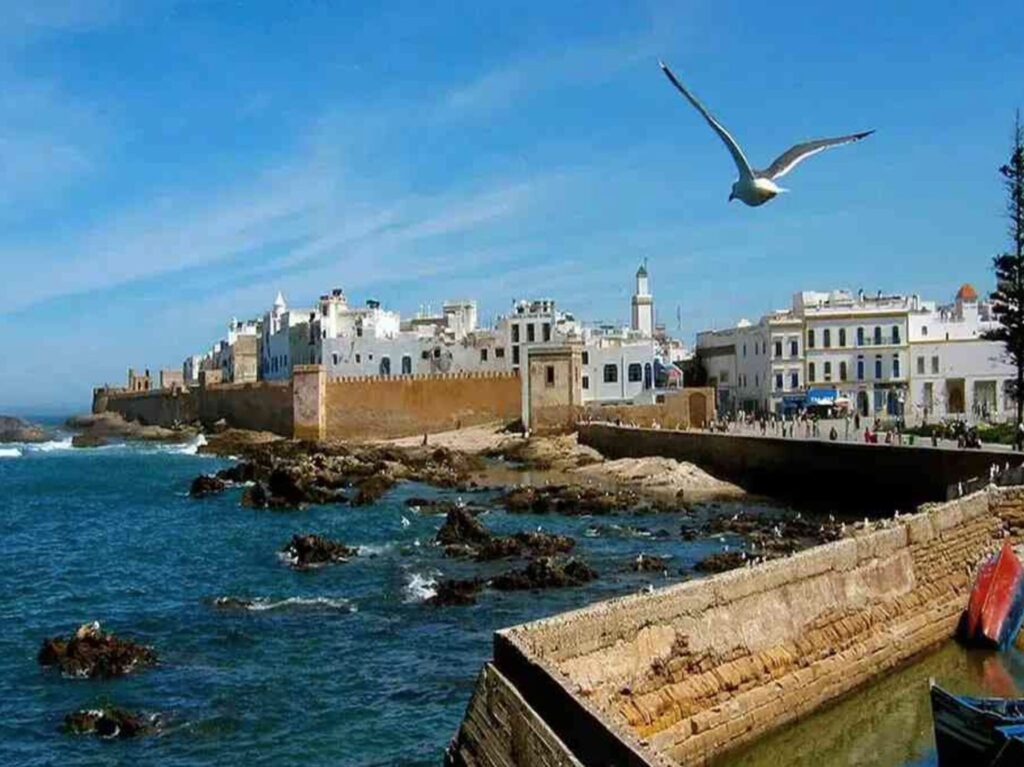
When to Go: Seasonal Tips for Essaouira Morocco Travel
- Spring (March–May): Ideal weather, fewer tourists, and perfect for exploring on foot.
- Summer (June–August): Popular with tourists; great for wind sports and beach days.
- Fall (September–November): Warm and breezy, with golden sunsets and music in the air.
- Winter (December–February): Quieter and cooler, but still enjoyable thanks to the mild coastal climate.
If you love music, plan your trip around the Gnaoua World Music Festival in late June—a vibrant celebration that draws international crowds and musicians.
FAQ About Essaouira Morocco Travel
What is Essaouira known for?
Essaouira is famous for its historic medina, Atlantic coastal views, strong winds, fresh seafood, and rich musical heritage—especially Gnaoua music.
Is Essaouira safe for tourists?
Yes, Essaouira is generally very safe. It’s a laid-back, tourist-friendly city. As always, stay aware of your surroundings and avoid isolated areas late at night.
How many days should I spend in Essaouira?
A 2–3 day visit is perfect to explore the city at a relaxed pace, but many travelers end up staying longer thanks to its peaceful vibe.
Can you swim in the ocean in Essaouira?
Yes, but be aware of strong winds and waves. It’s better for windsurfing and kitesurfing than calm swimming. There are lifeguards in peak season.
Is Essaouira expensive?
Not particularly. Compared to other Moroccan cities, it’s quite affordable. Street food, local taxis, and accommodations fit most budgets.
Conclusion: Why Essaouira Should Be on Your Bucket List
Essaouira Morocco travel is a sensory journey filled with ocean breezes, vibrant street life, and soulful music. Whether you’re a solo traveler seeking serenity, a couple chasing sunsets, or a surfer chasing the wind, Essaouira invites you to slow down and connect with Morocco’s rich coastal spirit.




